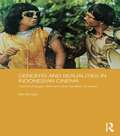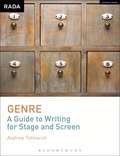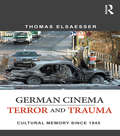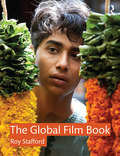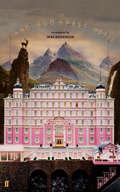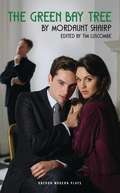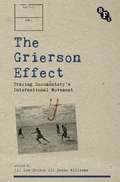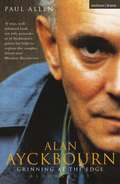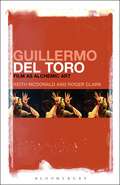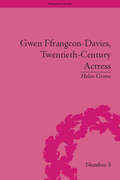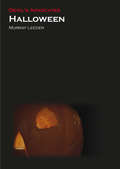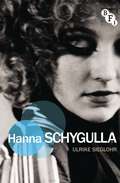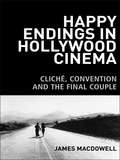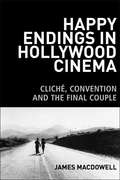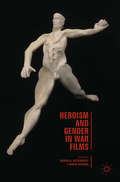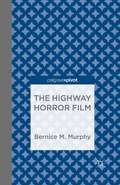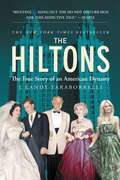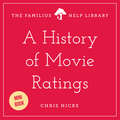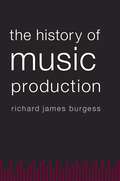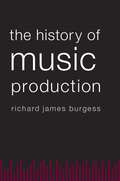- Table View
- List View
Genders and Sexualities in Indonesian Cinema: Constructing gay, lesbi and waria identities on screen (Media, Culture and Social Change in Asia)
by Ben MurtaghIndonesia has a long and rich tradition of homosexual and transgender cultures, and the past 40 years in particular has seen an increased visibility of sexual minorities in the country, which has been reflected through film and popular culture. This book examines how representations of gay, lesbian and transgender individuals and communities have developed in Indonesian cinema during this period. The book first explores Indonesian engagement with waria (male-to-female transgender) identities and the emerging representation of gay and lesbi Indonesians during Suharto’s New Order regime (1966-98), before going on to the reimagining of these positions following the fall of the New Order, a period which saw the rebirth of the film industry with a new generation of directors, producers and actors. Using original interview research and focus groups with gay, lesbi and waria identified Indonesians, alongside the films themselves and a wealth of archival sources, the book contrasts the ways in which transgendered lives are actually lived with their representations on screen.
Genders and Sexualities in Indonesian Cinema: Constructing gay, lesbi and waria identities on screen (Media, Culture and Social Change in Asia)
by Ben MurtaghIndonesia has a long and rich tradition of homosexual and transgender cultures, and the past 40 years in particular has seen an increased visibility of sexual minorities in the country, which has been reflected through film and popular culture. This book examines how representations of gay, lesbian and transgender individuals and communities have developed in Indonesian cinema during this period. The book first explores Indonesian engagement with waria (male-to-female transgender) identities and the emerging representation of gay and lesbi Indonesians during Suharto’s New Order regime (1966-98), before going on to the reimagining of these positions following the fall of the New Order, a period which saw the rebirth of the film industry with a new generation of directors, producers and actors. Using original interview research and focus groups with gay, lesbi and waria identified Indonesians, alongside the films themselves and a wealth of archival sources, the book contrasts the ways in which transgendered lives are actually lived with their representations on screen.
Genre: A Guide To Writing For Stage And Screen (RADA Guides)
by Andrew TidmarshWhat makes tragedy tragic? What makes comedy comic? What does Much Ado About Nothing have in common with When Harry Met Sally? Seneca with Desperate Housewives? Goldoni with Frasier? In Genre: A Guide to Writing for Stage and Screen Andrew Tidmarsh explores these questions and more. Investigating how the relationship between form and content brings endless discoveries and illuminations about how narrative works, this entertaining and accessible book looks at how storytelling in film and theatre has evolved and how an appreciation of form can bring the writer, director or actor a solid foundation and a sense of security, which ultimately assists the creative process. Including genre-specific exercises in every chapter helping the reader to write and devise, Genre: A Guide to Writing for Stage and Screen is for all those with an interest in story and can be used by writers, actors and directors alike – whether students or experienced professionals – to make the blank page appear less terrifying.
German Cinema - Terror and Trauma: Cultural Memory Since 1945
by Thomas ElsaesserIn German Cinema – Terror and Trauma Since 1945, Thomas Elsaesser reevaluates the meaning of the Holocaust for postwar German films and culture, while offering a reconsideration of trauma theory today. Elsaesser argues that Germany's attempts at "mastering the past" can be seen as both a failure and an achievement, making it appropriate to speak of an ongoing 'guilt management' that includes not only Germany, but Europe as a whole. In a series of case studies, which consider the work of Konrad Wolf, Alexander Kluge, Rainer Werner Fassbinder, Herbert Achterbusch and Harun Farocki, as well as films made in the new century, Elsaesser tracks the different ways the Holocaust is present in German cinema from the 1950s onwards, even when it is absent, or referenced in oblique and hyperbolic ways. Its most emphatically "absent presence" might turn out to be the compulsive afterlife of the Red Army Faction, whose acts of terror in the 1970s were a response to—as well as a reminder of—Nazism’s hold on the national imaginary. Since the end of the Cold War and 9/11, the terms of the debate around terror and trauma have shifted also in Germany, where generational memory now distributes the roles of historical agency and accountability differently. Against the background of universalized victimhood, a cinema of commemoration has, if anything, confirmed the violence that the past continues to exert on the present, in the form of missed encounters, retroactive incidents, unintended slippages and uncanny parallels, which Elsaesser—reviving the full meaning of Freud’s Fehlleistung—calls the parapractic performativity of cultural memory.
German Cinema - Terror and Trauma: Cultural Memory Since 1945
by Thomas ElsaesserIn German Cinema – Terror and Trauma Since 1945, Thomas Elsaesser reevaluates the meaning of the Holocaust for postwar German films and culture, while offering a reconsideration of trauma theory today. Elsaesser argues that Germany's attempts at "mastering the past" can be seen as both a failure and an achievement, making it appropriate to speak of an ongoing 'guilt management' that includes not only Germany, but Europe as a whole. In a series of case studies, which consider the work of Konrad Wolf, Alexander Kluge, Rainer Werner Fassbinder, Herbert Achterbusch and Harun Farocki, as well as films made in the new century, Elsaesser tracks the different ways the Holocaust is present in German cinema from the 1950s onwards, even when it is absent, or referenced in oblique and hyperbolic ways. Its most emphatically "absent presence" might turn out to be the compulsive afterlife of the Red Army Faction, whose acts of terror in the 1970s were a response to—as well as a reminder of—Nazism’s hold on the national imaginary. Since the end of the Cold War and 9/11, the terms of the debate around terror and trauma have shifted also in Germany, where generational memory now distributes the roles of historical agency and accountability differently. Against the background of universalized victimhood, a cinema of commemoration has, if anything, confirmed the violence that the past continues to exert on the present, in the form of missed encounters, retroactive incidents, unintended slippages and uncanny parallels, which Elsaesser—reviving the full meaning of Freud’s Fehlleistung—calls the parapractic performativity of cultural memory.
The Global Film Book
by Roy StaffordThe Global Film Book is an accessible and entertaining exploration of the development of film as global industry and art form, written especially for students and introducing readers to the rich and varied cinematic landscape beyond Hollywood. Highlighting areas of difference and similarity in film economies and audiences, as well as form, genre and narrative, this textbook considers a broad range of examples and up to date industry data from Europe, Africa, Asia, Australasia and Latin America. Author Roy Stafford combines detailed studies of indigenous film and television cultures with cross border, global and online entertainment operations, including examples from Nollywood to Korean Cinema, via telenovelas and Nordic crime drama. The Global Film Book demonstrates a number of contrasting models of contemporary production, distribution and consumption of film worldwide, charting and analysing the past, present and potential futures for film throughout the world. The book also provides students with: a series of exploratory pathways into film culture worldwide illuminating analyses and suggestions for further readings and viewing, alongside explanatory margin notes and case studies a user friendly text design, featuring over 120 colour images a dynamic and comprehensive blog, online at www.globalfilmstudies.com, providing updates and extensions of case studies in the book and analysis of the latest developments in global film issues.
The Global Film Book
by Roy StaffordThe Global Film Book is an accessible and entertaining exploration of the development of film as global industry and art form, written especially for students and introducing readers to the rich and varied cinematic landscape beyond Hollywood. Highlighting areas of difference and similarity in film economies and audiences, as well as form, genre and narrative, this textbook considers a broad range of examples and up to date industry data from Europe, Africa, Asia, Australasia and Latin America. Author Roy Stafford combines detailed studies of indigenous film and television cultures with cross border, global and online entertainment operations, including examples from Nollywood to Korean Cinema, via telenovelas and Nordic crime drama. The Global Film Book demonstrates a number of contrasting models of contemporary production, distribution and consumption of film worldwide, charting and analysing the past, present and potential futures for film throughout the world. The book also provides students with: a series of exploratory pathways into film culture worldwide illuminating analyses and suggestions for further readings and viewing, alongside explanatory margin notes and case studies a user friendly text design, featuring over 120 colour images a dynamic and comprehensive blog, online at www.globalfilmstudies.com, providing updates and extensions of case studies in the book and analysis of the latest developments in global film issues.
The Grand Budapest Hotel: The Illustrated Screenplay (The\wes Anderson Collection)
by Wes AndersonThe Grand Budapest Hotel recounts the adventures of Gustave H (Ralph Fiennes), a legendary concierge at a famous European hotel between the wars, and Zero Moustafa (Tony Revolori), the lobby boy who becomes his most trusted friend. Acting as a kind of father-figure, M. Gustave leads the resourceful Zero on a journey that involves the theft and recovery of a priceless Renaissance painting; the battle for an enormous family fortune; a desperate chase on motorcycles, trains, sledges and skis; and the sweetest confection of a love affair - all against the back-drop of a suddenly and dramatically changing Continent.Inspired by the writings of Stefan Zweig, The Grand Budapest Hotel recreates a by-gone era through its arresting visuals and sparkling dialogue. The charm and vibrant colours of the film gradually darken with a sense of melancholy as the forces of history conspire against a vanishing world.
The Green Bay Tree (Oberon Modern Plays)
by Mordaunt Shairp Tim Luscombe‘I hope I shan’t meet you one day in Piccadilly with a painted face, just because you must have linen sheets’ A beautiful young man is forced to choose between the love of his fiancée and the lifestyle of his male admirer.
The Grierson Effect: Tracing Documentary's International Movement (Cultural Histories of Cinema)
by Zoë Druick Deane WilliamsThis landmark collection of essays considers the global legacy of John Grierson, the father of British documentary. Featuring the work of leading scholars from around the world, The Grierson Effect explores the impact of Grierson's ideas about documentary and educational film in a wide range of cultural and national contexts – from Russia and Scandinavia, to Latin America, South Africa and New Zealand. In reconsidering Grierson's international infl uence, this major new study emphasises the material conditions of the production and circulation of documentary cinema, foregrounds core issues in documentary studies, and opens up expanded perspectives on transnational cinema cultures and histories.
Grinning At The Edge: A Biography of Alan Ayckbourn (Biography and Autobiography)
by Paul AllenNow in paperback, the hugely acclaimed, authorised biography of Britain's most popular playwrightAlan Ayckbourn is Britain's most popular playwright and its most private. He has won numerous awards for his plays and has worked with some of theatre's most celebrated names, yet he spends most of his time away from the limelight in a Yorkshire seaside town not writing at all but running a small repertory theatre.This is a portrait of a man who - from Relatively Speaking in 1965 to his double play House and Garden at the National Theatre in 2000 - has chronicled human behaviour, our aspirations and insecurities, while shaping the theatrical experience of millions."Mr Allen's book makes me want to start reading the entire Ayckbourn canon over again...splendid stuff" Hugh Leonard, Sunday Independent"Paul Allen has come up with a wise, well-informed book that not only persuades us of Ayckbourn's genius but also helps to explain this complex, driven man" Michael Billington, Country Life"Lucid, meticulously researched ... this impressively detailed account benefits from Paul Allen's rich inside knowledge of theatre" Terry Eagleton, Times Literary Supplement"Thorough and enjoyable" Christopher Hirst, Independent
Guillermo del Toro: Film as Alchemic Art
by Roger Clark Keith McDonaldA critical exploration of one of the most exciting, original and influential figures to emerge in contemporary film, Guillermo del Toro: Film as Alchemic Art is a major contribution to the analysis of Guillermo del Toro's cinematic output. It offers an in-depth discussion of del Toro's oeuvre and investigates key ideas, recurrent motifs and subtle links between his movies. The book explores the sources that del Toro draws upon and transforms in the creation of his rich and complex body of work. These include the literary, artistic and cinematic influences on films such as Pan's Labyrinth, The Devil's Backbone, Cronos and Mimic, and the director's engagement with comic book culture in his two Hellboy films, Blade II and Pacific Rim. As well as offering extensive close textual analysis, the authors also consider del Toro's considerable impact on wider popular culture, including a discussion of his role as producer, ambassador for 'geek' culture and figurehead in new international cinema.
Guillermo del Toro: Film as Alchemic Art
by Roger Clark Keith McDonaldA critical exploration of one of the most exciting, original and influential figures to emerge in contemporary film, Guillermo del Toro: Film as Alchemic Art is a major contribution to the analysis of Guillermo del Toro's cinematic output. It offers an in-depth discussion of del Toro's oeuvre and investigates key ideas, recurrent motifs and subtle links between his movies. The book explores the sources that del Toro draws upon and transforms in the creation of his rich and complex body of work. These include the literary, artistic and cinematic influences on films such as Pan's Labyrinth, The Devil's Backbone, Cronos and Mimic, and the director's engagement with comic book culture in his two Hellboy films, Blade II and Pacific Rim. As well as offering extensive close textual analysis, the authors also consider del Toro's considerable impact on wider popular culture, including a discussion of his role as producer, ambassador for 'geek' culture and figurehead in new international cinema.
Gwen Ffrangcon-Davies, Twentieth-Century Actress (Dramatic Lives)
by Helen GrimeGwen Ffrangcon-Davies is a paradox; a famous actress whose career spanned most of the twentieth century she is now largely forgotten. Drawing on material held in Ffrangcon-Davies's personal archive, Grime argues that the representation of the actress, on and off the stage, can be read in terms of its constructions of normative female behaviours.
Gwen Ffrangcon-Davies, Twentieth-Century Actress (Dramatic Lives #3)
by Helen GrimeGwen Ffrangcon-Davies is a paradox; a famous actress whose career spanned most of the twentieth century she is now largely forgotten. Drawing on material held in Ffrangcon-Davies's personal archive, Grime argues that the representation of the actress, on and off the stage, can be read in terms of its constructions of normative female behaviours.
Halloween (Devil's Advocates)
by Murray LeederThe 1970s represented an unusually productive and innovative period for the horror film, and John Carpenter's Halloween (1978) is the film that capped that golden age – and some say ruined it, by ushering in the era of the slasher film. Considered a paradigm of low-budget ingenuity, its story of a seemingly unremarkable middle-American town becoming the site of violence on October 31 struck a chord within audiences. The film became a surprise hit that gave rise to a lucrative franchise, and it remains a perennial favourite. Much of its success stems from the simple but strong constructions of its three central characters: brainy, introverted teenager Laurie Strode, a late bloomer compared to her more outgoing friends, Dr. Loomis, the driven, obsessive psychiatrist, and Michael Myers, the inexplicable, ghostlike masked killer.Film scholar Murray Leeder offers a bold and provocative study of Carpenter's film, which hopes to expose qualities that are sometime effaced by its sequels and remakes. It explores Halloween as an unexpected ghost film, and examines such subjects as its construction of the teenager, and the relationship of Halloween the film to Halloween the holiday, and Michael Myers's brand of "pure evil." It is a fascinating read for scholars and fans alike.
Hanna Schygulla (Film Stars)
by Ulrike SieglohrOne of the most celebrated figures of the New German Cinema, Hanna Schygulla acquired transnational stardom through her work with a range of directors in different national cinemas and languages.This absorbing study charts Schygulla's career and star persona from her early days as a member of Rainer Werner Fassbinder's experimental anti-teater group to her work with eminent European auteurs, including Jean-Luc Godard, Andrzej Wajda and, more recently, Fatih Akin. It also discusses her reinvention as an acclaimed cabaret chanteuse. Unpicking the myth that Schygulla's star persona depended on her collaboration with Fassbinder, Ulrike Sieglohr examines how her versatile and idiosyncratic acting style developed throughout her career. With in-depth analysis of key films and their international receptions, Sieglohr foregrounds Schygulla's individual agency, resourcefulness and talent.
Happy Endings in Hollywood Cinema: Cliche, Convention and the Final Couple
by James MacDowell"Hollywood ‘happy ending’ has long been considered among the most famous and standardised features in the whole of narrative filmmaking. Yet, while ceaselessly invoked, this notorious device has received barely any detailed attention from the field of film studies. This book is thus the first in-depth examination of one of the most overused and under-analysed concepts in discussions of popular cinema. What exactly is the 'happy ending'? Is it simply a cliché, as commonly supposed? Why has it earned such an unenviable reputation? What does it, or can it, mean? Concentrating especially on conclusions featuring an ultimate romantic union – the final couple – this wide-ranging investigation probes traditional associations between the 'happy ending' and homogeneity, closure, ‘unrealism’, and ideological conservatism, testing widespread assumptions against the evidence offered by a range of classical and contemporary films. "
Happy Endings in Hollywood Cinema: Cliche, Convention and the Final Couple (Edinburgh University Press)
by James MacDowellThe Hollywood ‘happy ending’ has long been considered among the most famous and standardised features in the whole of narrative filmmaking. Yet, while ceaselessly invoked, this notorious device has received barely any detailed attention from the field of film studies. This book is thus the first in-depth examination of one of the most overused and under-analysed concepts in discussions of popular cinema. What exactly is the 'happy ending'? Is it simply a cliché, as commonly supposed? Why has it earned such an unenviable reputation? What does it, or can it, mean? Concentrating especially on conclusions featuring an ultimate romantic union †“ the final couple †“ this wide-ranging investigation probes traditional associations between the 'happy ending' and homogeneity, closure, ‘unrealism’, and ideological conservatism, testing widespread assumptions against the evidence offered by a range of classical and contemporary films. Key Features: Defines key features of the Hollywood ‘happy ending’ through detailed textual analysis and theoretical debate. Traces the historical development of the scholarly approaches taken towards the cinematic ‘happy ending’ Reassesses the concept of cinematic closure and its relationship to genre, ideology and ‘unrealism’
Heroism and Gender in War Films
by Karen A. RitzenhoffFilmic constructions of war heroism have a profound impact on public perceptions of conflicts. Here, contributors examine the ways motifs of gender and heroism in war films are used to justify ideological positions, shape the understanding of the military conflicts, support political agendas and institutions, and influence collective memory.
The Highway Horror Film
by Bernice M. MurphyThe Highway Horror Film argues that 'Highway Horror' is a hither-to overlooked sub-genre of the American horror movie. In these films, the American landscape is by its very accessibility rendered terrifyingly hostile, and encounters with other travellers almost always have sinister outcomes.
The Hiltons: The True Story of an American Dynasty
by J. Randy TaraborrelliThe Hiltons is a sweeping saga of the success-and excess-of an iconic American family. Demanding and enigmatic, patriarch Conrad Hilton's visionary ideas and unyielding will established the model for the modern luxury hotel industry. But outside the boardroom, Conrad struggled with emotional detachment, failed marriages, and conflicted Catholicism. Then there were his children: Playboy Nicky Hilton's tragic alcoholism and marriage to Elizabeth Taylor was the stuff of tabloid legend. Barron Hilton, on the other hand, deftly handled his father's legacy, carrying the Hilton brand triumphantly into the new millennium. Eric, raised apart from his older brothers, accepted his supporting role in the Hilton dynasty with calm and quiet-a stark contrast to the boys' much younger half-sister Francesca, whose battle for recognition led her into courtrooms and conflict. The cast of supporting players includes the inimitable Zsa Zsa Gabor, who was married to Conrad briefly and remained a thorn in his side for decades, and a host of other Hollywood and business luminaries with whom the Hiltons crossed paths and swords over the years.
A History of Movie Ratings
by Chris HicksThe wire-thin line that separates movies rated PG and R has been crossed over so many times in both directions that industry observers are questioning whether the rating system carries any validity at all. Just where did this system come from? And who's been trusted with dishing out the ratings anyway? As a movie reviewer for more than thirty years, author Chris Hicks knows a thing or two about Hollywood. His masterful synopsis of CARA, the MPAA, and the mess we're in today will make you think twice before you take a film rating at face value.
The History Of Music Production (PDF)
by Richard James BurgessRichard James Burgess draws on his experience as a producer, a musician, and an author in this history of recorded music, which focuses on the development of music production as both art form and profession.
